Hydraulic fracturing
Type of resources
Topics
Keywords
Contact for the resource
Provided by
Years
Formats
Representation types
Update frequencies
-

This dataset is a catalogue of elastic stress models of hydraulic fracturing during the 2018 Preston New Road, PNR-1z operations (described in Clarke et al., 2019). This modelling was produced for the publication Kettlety et al. (2020), which studies the physical mechanisms controlling seismicity during hydraulic fracturing. For further details on the modelling approach and context for these data, see Kettlety et al. (2020) and the README file attached here.
-
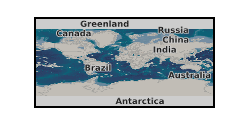
Text data capturing pore fluid pressures (upstream and downstream), axial stress, axial and radial displacement were conditioned and logged by a high-speed data acquisition unit (NI-DAQ 6341) recording data at 10kHz. Two additional cantilever-type radial strain probes are attached directly to the sample at 90 degrees to each other, with an average output calculated via sqrt[(rA2 + rB2)], where rA and rB are the two radial outputs, to monitor an average radial strain and crack opening displacement.
-
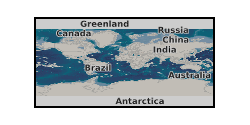
The mechanical data (confining and injection pressures) recorded during Vickers indentation experiments on samples of shale materials. These experiments were conducted on the I12 beamline, Diamond Light Source, Harwell as part of beamtime EE17606-1 between 31/01/18 and 05/02/18.
-
Homogenised catalogues of microseismicity and pumping data from the PNR-1z and PNR-2 injection wells
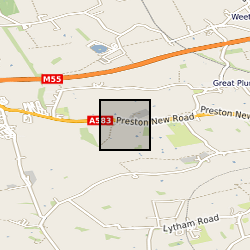
Microseismicity catalogues and fluid injection rate data recorded at the Preston New Road (Lancashire, UK) unconventional shale gas site during and after hydraulic fracturing of the PNR-1z and PNR-2 wells. Homogenised seismic catalogues include events recorded by the combined downhole and surface networks operated by the operator (Cuadrilla Resources Ltd.) and the British Geological Survey. Injection rate values are as initially reported by Cuadrilla Resources Ltd. The original datasets were provided by the UK Oil and Gas Authority (OGA).
-

This dataset is a catalogue of elastic stress models of hydraulic fracturing during the 2018 Preston New Road, PNR-1z operations (described in Clarke et al., 2019). This modelling was produced for the publication Kettlety et al. (2020), which studies the physical mechanisms controlling seismicity during hydraulic fracturing. For further details on the modelling approach and context for these data, see Kettlety et al. (2020) and the README file attached here.This is a combined microseismic catalogue of all of the seismic magnitudes recorded for microseismic events recorded during Cuadrilla's Preston New Road hydraulic fracturing operations. 5 magnitude types are given for each event: the downhole measured moment magnitude (Mw); the downhole measured local magnitude (ML); the surface measured ML; the surface measured Mw; and a combined/corrected Mw. This corrected Mw follows the procedure laid out in Kettlety et al. (2021, https://doi.org/10.1785/0220200187) and Baptie et al. (2020, Robust relationships for magnitude conversion of PNR seismicity catalogues. British Geological Survey Open Report, OR/20/042) Functionally, it combines the surface measured Mw and the downhole measured Mw corrected using Equations 4.6 and 4.7 of Baptie et al. (2020). Also included are event origin times, associated injection stages (as described in Clarke et al., 2020, https://doi.org/10.1785/0220190110, and Kettlety et al., 2021), whether this stage was a "minifrac" (just for PNR-1z), the "relative fracture order" (RFO) of that stage, and it's downhole measured location (easting and northing in BNG coordinates, and depth BSL). Downhole measurements Mw and ML were conducting by Schlumberger Ltd. on behalf to the Preston New Road operator Cuadrilla Resources Ldt., and surface ML and Mw were measured by the BGS in Baptie et al., (2020).
-
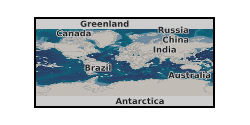
This data set contains seismic source parameters (magnitudes, corner frequencies, stress drops and their associated uncertainty) for 94 microseismic events linked to fault reactivation during hydro-fracturing operations in the Horn River Basin (British Columbia). The data presented here were derived from proprietary third party seismic data recorded on 2 arrays of 35 - 15 Hz GEO-OMNI-2400 borehole geophones each. These data were first reported in Adam G Klinger, Maximilian J Werner, Stress drops of hydraulic fracturing induced microseismicity in the Horn River basin: challenges at high frequencies recorded by borehole geophones, Geophysical Journal International, Volume 228, Issue 3, March 2022, Pages 2018–2037, https://doi.org/10.1093/gji/ggab458
-
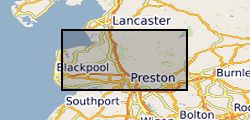
This data is the analysis of the river water of the paper: Wilson et al. (20 "Compartmentalisation and groundwater–surface water interactions in a prospective shale gas basin: Assessment using variance analysis and multivariate statistics on water quality data" Hydrological Processes 34:3271–3294 (https://onlinelibrary.wiley.com/doi/10.1002/hyp.13795) The data is from two sampling campaigns sampling the rivers of the Wyre and Ribble catchments in north west England. The river water samples were collected to test whether groundwater compartmentalisation observed in the underlying aquifers impacted the surface water quality. The compartmentalisation of the aquifer is important because this has been shown to control the vulnerability of water resources to pollution from facking fluids injected at depths of 1000's m.
-
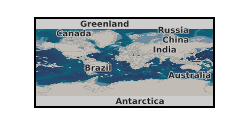
"This data was compiled for the paper "Self-similarity of seismic moment release to volume change scaling for volcanoes: a comparison with injection-induced seismicity", that has been accepted for publication in Geophysical Research Letters. It is a compilation of literature values of volume changes and associated total seismic moment releases for many injection-induced earthquake sequences. It also includes a number of total moment releases and volume changes from volcanic sequences that were calculated for the study from published earthquake catalogues. This work was conducted to examine the response of the shallow crust to volume changes in the two different contexts, make the comparison between them, and discuss why the response is similar or dissimilar. The data consists of two tables. For the fluid injection data the table lists the project name, the approximate dates, the source, the type of operation, and naturally the volume and total seismic moment release. For the volcanotectonic sequences, it lists the name of the eruption/intrusion, the dates, volume change, and moment release. Also included in both tables are the seismic efficiency (functionally the ratio of moment releasee to volume change, see Hallo et al., 2014) and seismogenic index (another measure of the response of the crust to a volume change, see Shapiro et al., 2010). Aki, K. (1965). Maximum likelihood estimate of b in the formula log N = a-bM and its confidence. Bulletin of Earthquake Research Institute of the University of Tokyo, 43, 237–239. Cao, A., & Gao, S. S. (2002). Temporal variation of seismic b -values beneath northeastern Japan island arc Geophysical Research Letters, 29(9), 48-1-48–3. https://doi.org/10.1029/2001gl013775 Hallo, M., Oprsal, I., Eisner, L., & Ali, M. Y. (2014). Prediction of magnitude of the largest potentially induced seismic event. Journal of Seismology, 18(3), 421–431. https://doi.org/10.1007/s10950-014-9417-4 Shapiro, S. A., Dinske, C., Langenbruch, C., & Wenzel, F. (2010). Seismogenic index and magnitude probability of earthquakes induced during reservoir fluid stimulations. Leading Edge, 29(3), 304–309. https://doi.org/10.1190/1.3353727 "
-
Fluid pH and major and minor element data from shale-acidic fluid interaction laboratory experiments
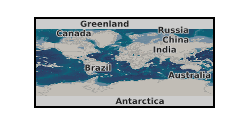
This dataset presents major (ICP-OES) and minor (ICP-MS) element data and fluid pH during interaction of simulated fracturing fluids with the Bowland-Hodder shale at a variety of conditions, i.e. fluid acidity (pH 1-5), temperature (25-70 C), and rock/fluid ratio (from 0.2:200 to 20:200), as well as two end member mineralogical compositions (from 618 m depth and 673 m depth). The data was collected under the SECURe (Subsurface Evaluation of CCS and Unconventional Risks funded under the European Union’s Horizon 2020 research and innovation programme under grant agreement number 764531. Data supplied by permission of University of Nottingham and British Geological Survey.
-
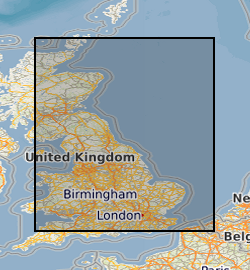
This dataset contains dissolved methane concentrations from groundwater in Great Britain, predominantly from England. Data were collated in Microsoft Excel (.xlsx) format from four publicly accessible sources: the British Geological Survey (from Bell et al., 2017), the Environment Agency for England (from the online Water Quality Archive), and local baseline data for the shale gas sites of Preston New Road (from Cuadrilla Resources) and Kirby Misperton (from Third Energy). In total, 2997 dissolved methane concentrations are included in the dataset and were collected from 922 unique locations from October 1992 to July 2018. The data were used within a Bayesian framework to create a dynamic baseline (a baseline that can change in time and space to reflect ongoing environmental change) that can predict the probability that a change in dissolved methane concentration has occurred, for example in the context of monitoring aquifers at shale gas sites using hydraulic fracturing methods. The data presented are the underlying dataset to Wilson et al., 2020, Science of the Total Environment: https://doi.org/10.1016/j.scitotenv.2019.134854. Bell, R. A., Darling, W. G., Ward, R. S., Basava-Reddi, L., Halwa, L., Manamsa, K., & Dochartaigh, B. Ó. (2017). A baseline survey of dissolved methane in aquifers of Great Britain. Science of the Total Environment, 601, 1803-1813. Wilson, M. P., Worrall, F., Davies, R. J., & Hart, A. (2020). A dynamic baseline for dissolved methane in English groundwater. Science of The Total Environment, 711, 134854.
 NERC Data Catalogue Service
NERC Data Catalogue Service